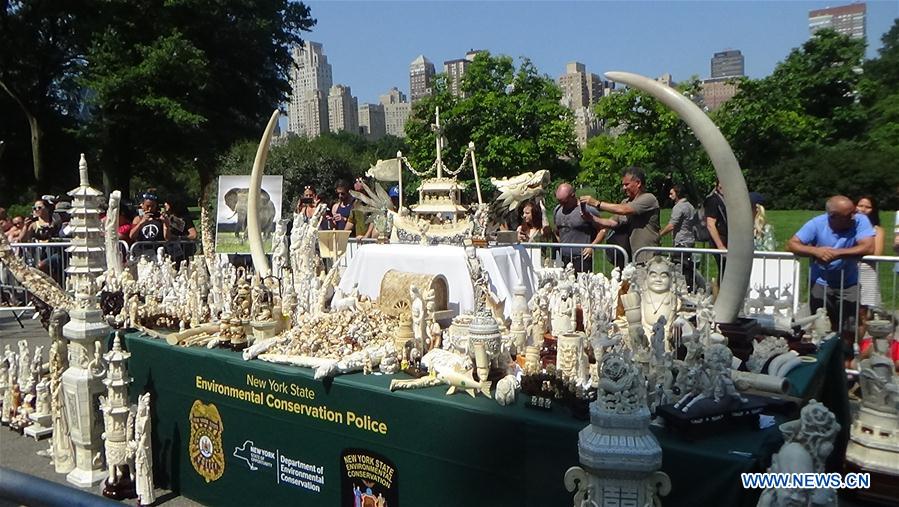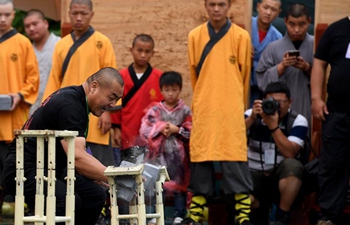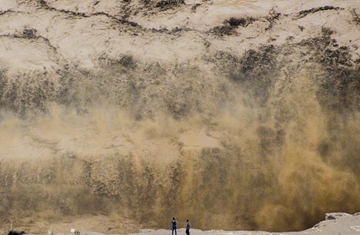
The ivory artifacts which are going to be destroyed in the Ivory Crush event are displayed at Central Park in New York, the United States, on Aug. 3, 2017. Nearly two tons of ivory artifacts crafted from the tusks of about 100 slaughtered elephants were destroyed by a rock crusher in New York City's Central Park on Thursday. The event, jointly organized by the Wildlife Conservation Society (WCS) and the New York State Department of Environmental Conservation, is designed to show New York's resolution to smash illegal ivory trade. (Xinhua/Li Xueyao)
NEW YORK, Aug. 3 (Xinhua) -- Nearly two tons of ivory artifacts crafted from the tusks of about 100 slaughtered elephants were destroyed by a rock crusher in New York City's Central Park on Thursday.
Th event, jointly organized by the Wildlife Conservation Society (WCS) and the New York State Department of Environmental Conservation, is designed to show New York's resolution to smash illegal ivory trade.
"It's a bad event from one hand, because we think about how many elephants gave their lives for the trinkets," Daniel L. Foote, Deputy Assistant Secretary in the Department of State's Bureau of International Narcotics and Law Enforcement, told Xinhua.
"On the other hand, it's a proud event for the law-enforcement successes that led us to seize and prosecute the criminals involved," he said.
"More than anything is to raise public awareness. We can get the word out, so that those of us who purchase illegal wildlife products are responsible for killing these animals," Daniel said.
Jimmiel Mandima, Director for partner relations with the African Wildlife Foundation, said it was important to destroy the ivory artifacts "because it means there's no value to keep ivory if you own any, and because we don't expect in the future ivory be sold anywhere."
Illegal hunting and habitat loss are seen as the major factors in the shrinking population of elephants.
According to the WCS, the Central African forest elephant population dropped 65 percent between 2002 and 2013 as a result of poaching, and its range shrank 30 percent.
Some populations of savannah elephants have also suffered major losses: in Tanzania and Mozambique, recent surveys show their numbers have dropped by 60 percent and 40 percent, respectively, in the past five years.
In addition, all three types of elephants including Asian, African forest and African savannah are listed as threatened on the Red List of the International Union for Conservation of Nature.
"It's a message to the public and to all of us that elephants are being killed. It's not cool to own ivory," Jimmiel said.
Thursday's ivory crush is one of the actions of WCS 96 Elephants Campaign, the name of which comes after the data that wild elephants are killed at rates as high as 96 per day.
During the 10 days before the World Elephant Day on Aug. 12, the WSC will continue to take another action called 10 Days For Elephants, so that people can sign up and receive 10 easy, fun, impactful actions to protect elephants and their homes.
New York State passed a law in 2014 to prevent the trade of illegal ivory articles by strengthening criminal and civil penalties for buyers and sellers whose actions are endangering elephant populations worldwide.
The law bans the sale of elephant and mammoth ivory and rhinoceros horns, with limited exceptions for products such as antiques demonstrated to be at least 100 years old and containing only a small amount of ivory.















